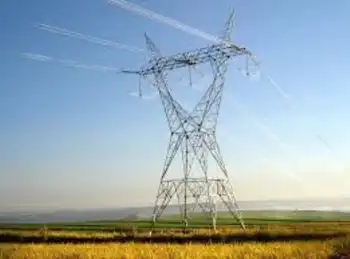Canada wind industry grows amid opposition storm
By Reuters
High Voltage Maintenance Training Online
Our customized live online or in‑person group training can be delivered to your staff at your location.

- Live Online
- 12 hours Instructor-led
- Group Training Available
Although polls show widespread support for the renewable energy source, a growing number of companies say that support quickly fades among those who must live alongside wind farms, leading to project delays and extra costs.
"There are many opportunities for small, anti-wind groups to delay a project," said Debbie Boukydis, spokeswoman for Enbridge Inc, which had to delay building what will be the country's second-biggest wind farm by more than a year.
"There has been significant financial impacts from having to wait a year," she said.
Delays are common around the world but acute in a country that is less familiar with wind farms.
The industry is criticized as an expensive and inefficient source of power, and opponents also argue that large-scale projects can harm locals' health and are a blight on the environment of the rural communities where they are usually located.
Despite rising opposition, the tiny industry has recently exploded in Canada, doubling in size in 2006 alone. Canada has 1,588 megawatts of installed wind capacity, accounting for about 0.5 percent of its total electricity supply.
Given the country's vast coasts and prairies, it could easily get 20 percent of its energy needs from wind alone, said Robert Hornung, president of the Canadian Wind Energy Association.
"Canada, quite possibly, has the best wind resources in the world."
The proportion of electricity that Canada gets from wind is slightly lower than that of the United States but far lower than most European nations because it was "a little late getting into the game," Hornung said in an interview.
Denmark, which leads the pack, gets about 20 percent of its electricity from wind.
Germany and Spain aren't too far behind, and the European Union adopted a resolution earlier this year to get 20 percent of its energy from renewable sources - wind, solar and hydro-electric - by 2020, in an effort to cut greenhouse gas emissions.
In Canada, some 2,700 MW of new wind energy is contracted to come on line in the next few years. But as the industry grows, so too does opposition.
The 182 MW Enbridge project, in Ontario's Bruce County on Lake Huron, northwest of Toronto, "will industrialize over 45,000 acres of rural countryside," its detractors, the Windfarm Action Group, warned as the project waded through 14 months of appeals.
Enbridge, Canada's No. 2 pipeline company, slightly reduced the size of the wind farm and was allowed to proceed with it in July after a provincial tribunal overruled residents' concerned about noise and unsightliness.
A nearby project by EPCOR Utilities Inc, however, has been stalled since January, when the utility said it needed to rethink plans for its 158 MW Kingsbridge II wind farm.
The utility, owned by the city of Edmonton, Alberta, and the parent of EPCOR Power LP, ended agreements with some suppliers, costing it as much as $20 million ($19 million US) because of uncertainty about when it can begin construction.
Neil Levine, an EPCOR spokesman, told Reuters there were several delays, and that the project faced opposition from "some people who are not in favor of the project."
Wind farms "are a new thing here in Ontario, and Canada, and that requires a level of educating people about what wind farms are, and what they aren't," Levine said.











